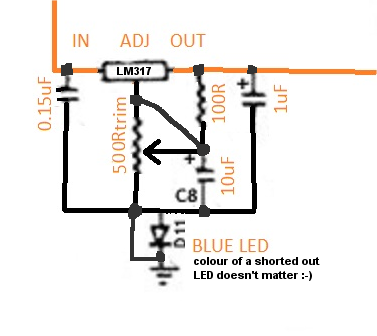Matador
Well-known member
With the load connected, measure both sides of your 32 ohm resistor (R15?). You have nearly 10V across the regulator under load, yet only 0.3V/22ohm = 14mA flowing through your test resistor.
Have you made any changes to the biasing diode that connects to the 'GND' pin of the 7806? What if you bridge across it?
Have you made any changes to the biasing diode that connects to the 'GND' pin of the 7806? What if you bridge across it?








![Electronics Soldering Iron Kit, [Upgraded] Soldering Iron 110V 90W LCD Digital Portable Soldering Kit 180-480℃(356-896℉), Welding Tool with ON/OFF Switch, Auto-sleep, Thermostatic Design](https://m.media-amazon.com/images/I/41gRDnlyfJS._SL500_.jpg)







